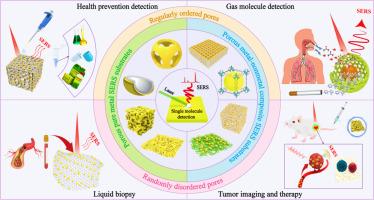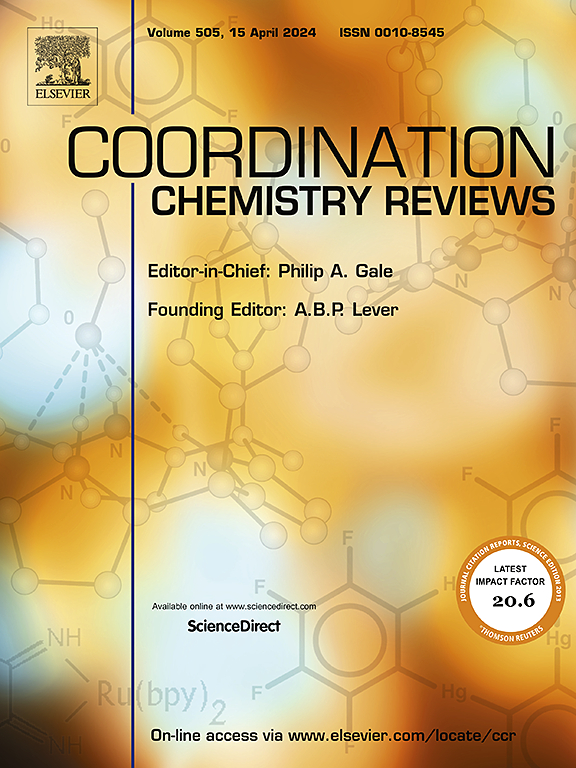Controllable nanopore SERS platform for single-molecule level biosensing
IF 20.3
1区 化学
Q1 CHEMISTRY, INORGANIC & NUCLEAR
引用次数: 0
Abstract
Surface-enhanced Raman spectroscopy (SERS) is a significant analytical technique based on the interaction between light, nanostructures, and molecules. Its enhancement efficiency relies on the “hot spots” generated by the synergistic action of localized electromagnetic fields and charge transfer at the SERS substrate surface. However, due to the uneven enhancement characteristics and distribution of these hot spots, only a limited number of target molecules can be effectively enhanced. The “confined space effect” of the nanopore structure further enhances the localization accuracy of hotspots and increases molecular enrichment in hotspot regions, thereby providing new opportunities for single-molecule (SM) analysis. First, this review outlines the development of SERS technology and summarizes the research directions since the turn of the century. It then discusses the enhancement mechanisms of SERS and the key factors influencing the hotspots in nanopore-based SERS. From the perspectives of material systems and pore morphology, this article focuses on two types of SERS substrates: porous pure metals and porous metal-nonmetal composites. It systematically explores the preparation strategies and performance of porous SERS platforms from the viewpoint of two types of pore structures: random disorder and regular order. Furthermore, the paper analyzes the significant progress of nanopore structures in SM SERS-based quantitative analysis. The review also covers the application of porous SERS platforms in healthcare, particularly in sensing research related to prevention, screening, and prognosis, including areas such as health prevention detection, gas molecule detection, liquid biopsy, and tumor imaging and therapy. Finally, based on current research, the review presents key insights on nanopore SERS substrates.

求助全文
约1分钟内获得全文
求助全文
来源期刊

Coordination Chemistry Reviews
化学-无机化学与核化学
CiteScore
34.30
自引率
5.30%
发文量
457
审稿时长
54 days
期刊介绍:
Coordination Chemistry Reviews offers rapid publication of review articles on current and significant topics in coordination chemistry, encompassing organometallic, supramolecular, theoretical, and bioinorganic chemistry. It also covers catalysis, materials chemistry, and metal-organic frameworks from a coordination chemistry perspective. Reviews summarize recent developments or discuss specific techniques, welcoming contributions from both established and emerging researchers.
The journal releases special issues on timely subjects, including those featuring contributions from specific regions or conferences. Occasional full-length book articles are also featured. Additionally, special volumes cover annual reviews of main group chemistry, transition metal group chemistry, and organometallic chemistry. These comprehensive reviews are vital resources for those engaged in coordination chemistry, further establishing Coordination Chemistry Reviews as a hub for insightful surveys in inorganic and physical inorganic chemistry.
 求助内容:
求助内容: 应助结果提醒方式:
应助结果提醒方式:


